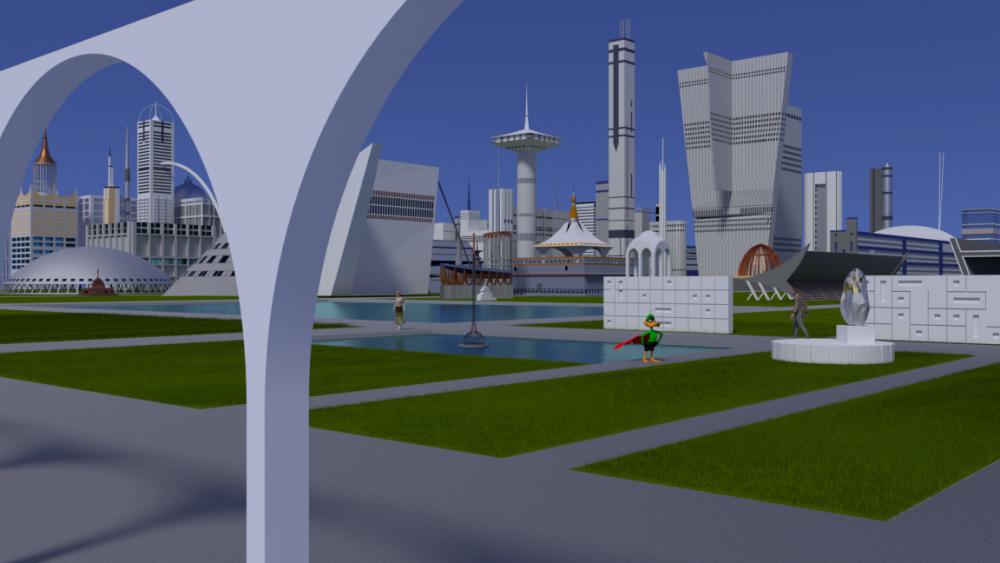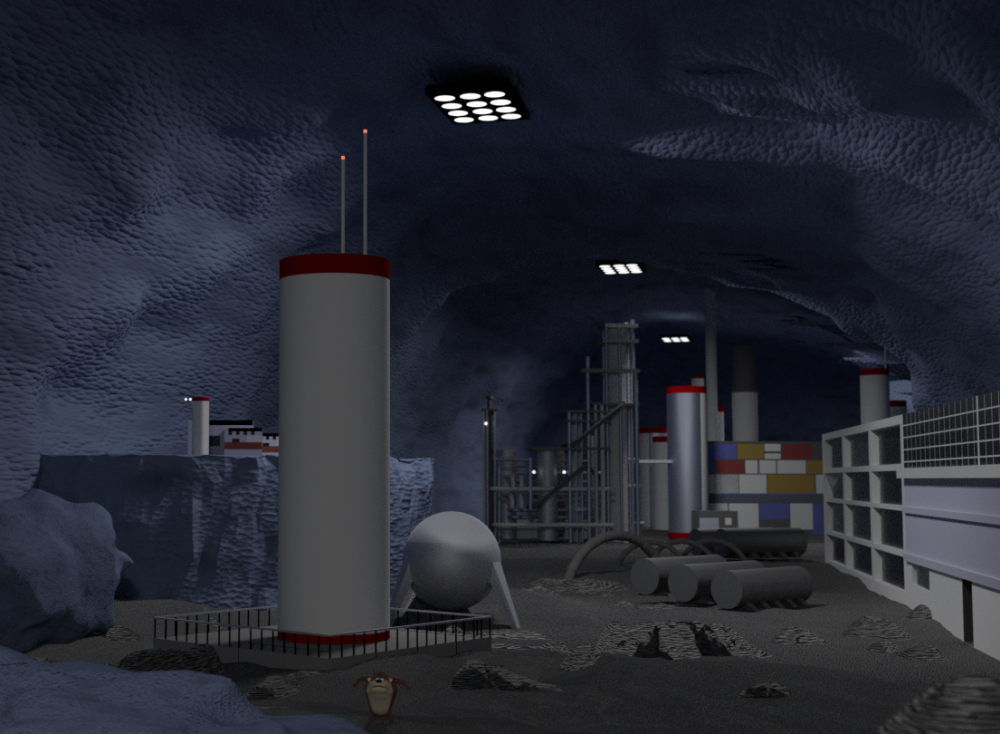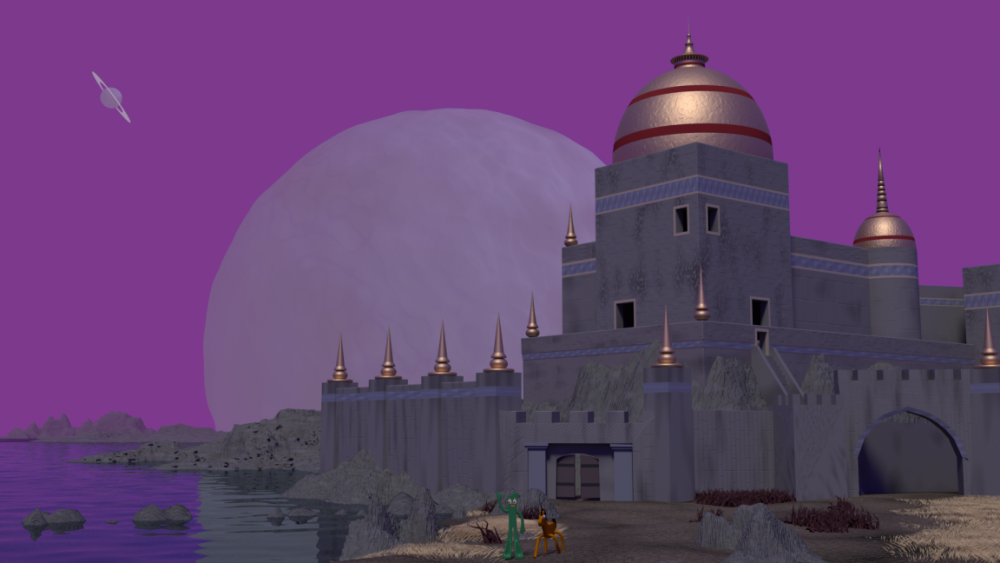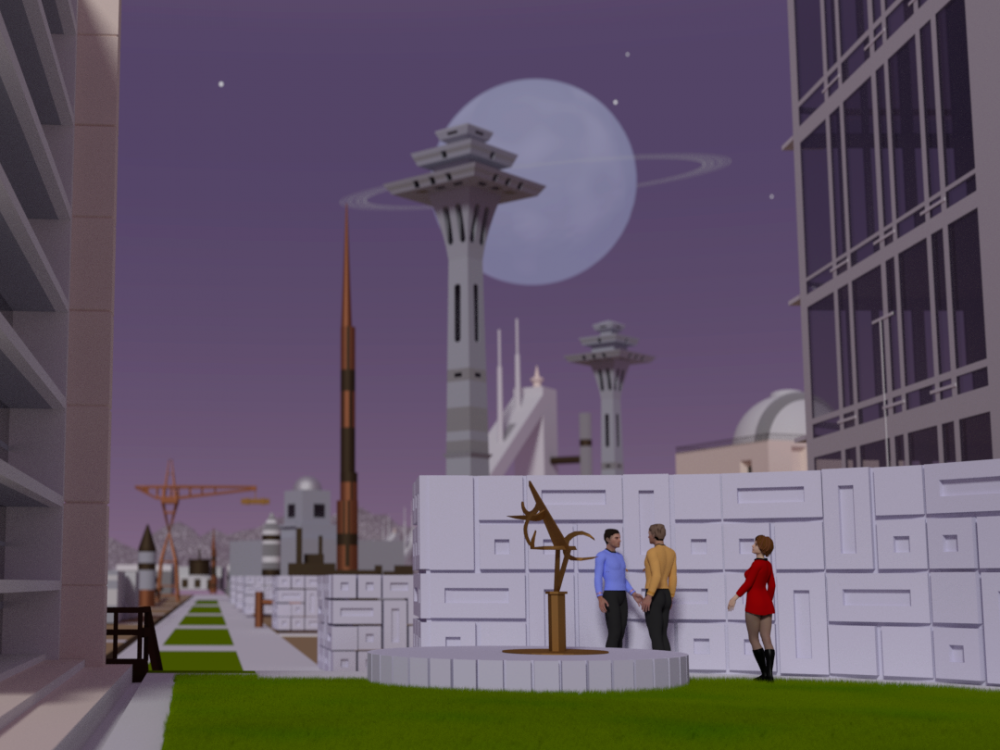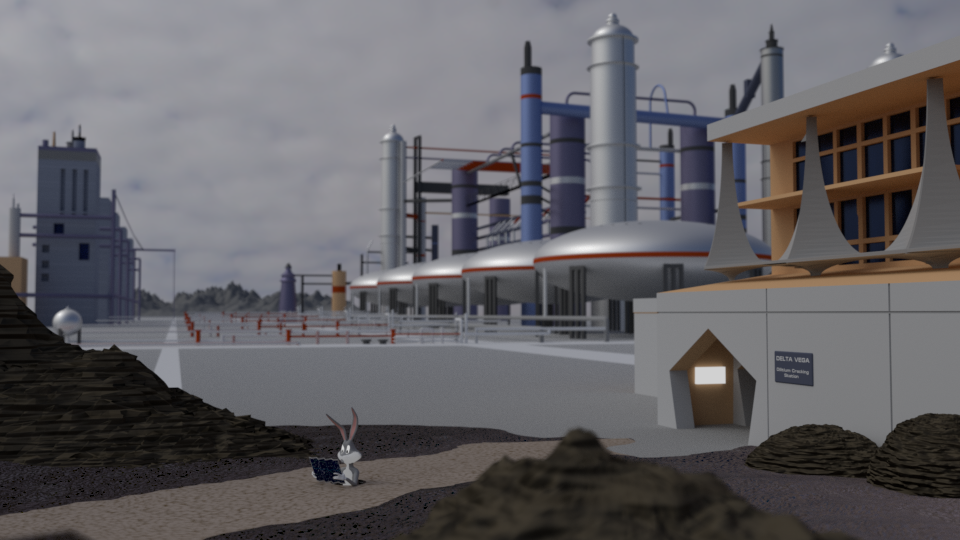Everything posted by Janus
-
The Official JOKES SECTION :)
ZENO: The chicken couldn't have crossed the road. It would have first had to cross halfway, then halfway the remaining distance...
-
So there is no need for bigbang-theory?
If the universe were not expanding, we would not see any red shift with distance. Thus the increasing red-shift we see with increasing distance is evidence that the universe is expanding over time, and was smaller in the past than it is now. If we extrapolate back in time, we get the very dense, very hot state of the Big Bang. The acceleration of the the expansion over time is evidenced by the exact relationship between red-shift and distance. There are three possible scenarios for an expanding universe. All of them will show a red-shift: Case 1: expansion slows over time Case 2: expansion remains constant over time. Case 3: expansion speeds up over time. Only in case 2 will there be a perfect direct relationship between distance and red-shift, where doubling the distance exactly doubles the red-shift. In the other two cases, doubling the distance results in a red-shift that is not an exact doubling. Whether it is less than double or more than double distinguishes between the two cases. We have found that the red-shift distance ratio indicates that the universe's expansion rate has been increasing over time, and thus the rate of the expansion is accelerating.
-
Today I Learned
Today, I learned that there is a resort in Finland that shares its name with my paternal grandfather's surname at birth ( he changed it just prior to immigrating, and then again after reaching the US.) Though I really shouldn't be surprised, as it basically translates to Spruce lake, and as there are a lot of lakes and Spruce trees in Finland, I'd expect it to be a fairly common name. ( Ironically, his father was a black/gun smith, so his surname could have ended up being Seppä, which would be the Finnish equivalent of Smith.)
-
Has anyone
The Big bang was not an explosion in space and time, it was an explosion of space and time. It happened everywhere in the universe, as it involved the entirety of all space.
-
The Killing of George Floyd: The Last Straw?
The problem is that you can't assume that all those that riot are there "for the cause". Protests, no matter how peaceful those who organize them intend them to be often attract those who are only there to cause trouble and want to use the peaceful protesters as cover. Then there can be people from the other side of the issue that show up just to stir up trouble; The hope being that by doing so, they can get people to focus on that rather than the issue. There was a post above about looting of a store in Portland. But there was also a very peaceful protest here a day or so later*. Which do you think made the news? It's a bit of a Catch 22, Peaceful protests attract no attention, while violent ones attract the wrong attention. *As an example of one of the points I made above, there were also reports of a group of "Proud Boys" that were planning to march to meet the protesters. Since I never heard of any problems, I assume that the two groups were kept apart.
-
Pangaea ?
Pangaea is just the last of a series of super-continents that existed in the past. The land masses had collided and separated in ages prior to its formation. As far as an imbalance is concerned; The entire mass of the Earth's crust is 2.77e22 kg, which is just 1/72 the mass of the Earth. In addition, continental crust is actually less dense than oceanic crust. So while the crust is thicker under the continents, it doesn't weigh that much different per square mile than oceanic crust. Thirdly, even if there were a slight shift in the mass of the Earth, it wouldn't cause an " imbalance". The axis of rotation would just shift to pass through the new center of mass. It isn't like a washing machine drum which starts to shake the whole machine if the load is unbalanced. In this situation, the axis of rotation is fixed relative to the washing machine and can't shift in response to the center of mass change. Thus the whole washing machine moves in response. The Earth rotates freely in space and is not connected to something else like the drum is connected to the washing machine.
-
Gravity
We have already detected gravitational waves. However, neither gravitational or magnetic attraction is mediated by waves. A "magnetic wave", is just one component of an electromagnetic wave, or in other words, light and radio waves. Magnetism, as in the attraction and repulsion of magnets, is due to a field, not a wave.
-
"Wait a carrot-picking minute...
Since my last post, I've done a few more, Each one is a recreation of a matte painting used for the original Star Trek series. All but the last one have an element of "whimsy" added. at the end of the post I've added some comments and notes for each image. 1. Not exactly the reception Kirk and the landing party were expecting. 2. Duck Dodgers in the 23rd and 1/2 century. 3.The "Devil" in the Dark 4. Starbase XI Note: 1. Rigel VII fortress used in "'The Cage" ( first pilot) and later seen in "The Menagerie". It was also later used for Flint's home in "Requiem For Methuselah" My first try at using the "fur" feature of Blender to simulate ground cover/vegetation. 2. Eminiar VII from "A Taste of Armageddon". This was also used as Scalos for " Wink of an Eye". While Duck Dodgers is my self-created model, the other people in the scene are posable models imported from Daz-3D. About the only modifications I made with them were in the poses and coloration of clothing. 3. Underground mining facility from The episode of the same title as the caption. This one was also later reused for "The Gamesters of Triskelion" 4. Starbase XI from "Court Martial". Again, the base figures were imported from Daz-3D, though this time I had to do a bit more to make uniforms for them to be wearing. This one also offered some additional challenges. The perspective lines in the original matter painting were not exactly consistent. So in order to keep things looking as close as possible to the painting, Some of the objects in this scene are not "square".
-
"Wait a carrot-picking minute...
Somehow, He found his way into the ST universe also. (during the course of the cartoons featuring him, the colors of his outfit changed, this is one of the early color schemes)
-
"Wait a carrot-picking minute...
It's just a new twist on an old running gag.
-
"Wait a carrot-picking minute...
Thanks this one did give me a few headaches. It turns out that the original artwork had some Escheristic qualities to it, with pipes and columns connecting in ways that that they couldn't in reality
-
"Wait a carrot-picking minute...
Many Bugs Bunny cartoons began with Bugs popping popping out of the ground expecting to to be at some vacation spot, but instead finding himself at some other remote lcoation. This would result in him pulling out a map and quipping " I knew I shoulda taken that left turn at Albuquerque!" The background here, as noted by Phi for All, is a Litihum cracking station as depicted in the original Star trek series. Specifically, the one on Delta Vega, located at the edge of the galaxy (from the episode "Where No man Has Gone Before"). Risa is a planet from ST the Next Gen known as a prime place to go for R&R. Switching "Aldebaran" for "Albuguerque" was poetic license on my part. The 3D rendering of the station is based on the matte painting used for the episode.
-
"Wait a carrot-picking minute...
-
What is your favorite tv series at the moment?
I had read the book, but my wife hadn't, so we while we watched it from different perspectives, we both enjoyed it.
-
What is your favorite tv series at the moment?
Our daughter got us a ROKU a few years ago. At the time we had a fairly low end internet connection speed, and it really didn't get much use. It wasn't until a couple of years ago when we upgraded our internet, that we got the Netflix set up. Hulu came later (mainly because my daughter wanted us to watch a series she really loved (Timeless), which was on Hulu ( not a Hulu original but a canceled network show). Just recently while we were over at their place, we happened to mention that we had just recently caught a couple of episodes of Good Omens while spending the night at a place that had Amazon Prime.( I've read the book a couple of times, and remember being excited when I heard it was going to be made for TV, and then disheartened when I learned it would be on Amazon Prime, which we didn't have). That's when my daughter's boyfriend offered to set us up with it. One nice thing about the Roku is that it allows us to watch Yahoo! sports on our TV. Normally this would not be that big a thing except that we do like to follow our local NWSL team (Professional Women's Soccer team), and their games are very seldom televised, while Yahoo! sports does stream the games.
-
What is your favorite tv series at the moment?
The Walking Dead (though I must admit that my enthusiasm for the show has waned. It's almost a "Not wanting to give up on it after investing in it for so long" more than a "can't wait for the next episode". The Good Place (though this is ending after this season) Supernatural (my wife actually was the one to start this one, I just started watching because it was on in the background. Another show in its last season. I do also watch The Flash On Netflix we'll watch The Kominsky Method, Stranger Things and enjoyed the first season of Lost in Space, We are currently catching up with The Marvelous Mrs. Maisel on Amazon Prime (We just finished Good Omens) I heard that the Orville is switching to Hulu. so that'll be a streaming series also. If it wasn't for our daughter and her boyfriend, I doubt we would have sprung for any of these streaming services on our own, they set us up with all three.
-
Quick question about perpetual motion.
While the efficiency of the combined pair would be the result of the combined efficiency of the two devices, it wouldn't combine to improve the overall efficiency but to decrease it. If you compound a 99% efficient device onto a another 99% efficient device, you end up with less than 99% end efficiency for the combination. It is the loses inherent in each device that add up.
-
Idea for a rocket engine
I'll clarify for him. For the reaction mass to produce an upward force on the rocket, it has to be accelerated downward relative to the rocket. In order to return that mass to the top of the rocket, any downward velocity the mass has relative to the rocket has to be stopped and reversed. This is an acceleration just as much as the one producing the upwards force on the rocket (acceleration is either change in speed, direction or both). This action will exert a force on the rocket opposite to that caused by accelerating the fuel downward. The end result of this force will be counter any upward movement by the rocket. This ends up with the net movement of the rocket as being zero. There is no way around this. There is no "clever" way to "fool" the rocket into having net movement by recirculating the fuel/reaction mass.
-
Landing on a black hole!!
Just to add a bit to what Zapatos said. You wouldn't have to kill quite all of the Earth's orbital speed in order to drop something into the Sun. Using the Earth's mean circular velocity of 29.9 km/sec, You would need to drop that to ~2.9 km/sec, meaning you need to kill "just" 27 km/sec of the Earth's velocity. Essentially, what you are doing is putting a object into an elliptical orbit that just grazes the surface of the Sun at perihelion. The same works for a black hole. However, a black hole makes for a smaller "target". A solar mass black hole only has an event horizon radius of ~3 km ( vs. 695000 km for the Sun) This means you would have to shed even more of the Earth's orbital velocity in order to "drop" an object into it, because you need to drive the periapis lower. For all intents and purposes, you would have to kill all of the Earth's orbital velocity in order to score a hit. So it would be easier to hit the Sun from the Earth than it would to hit a solar mass BH from the same orbit.
-
What is your favorite tv series at the moment?
For right now, I'd have to say "The Orville". There are other shows that I watch regularly, but it seems to be the one I look forward to the most.
-
Implications of movie physics
Drag force varies by the square of the velocity. It also depends of the drag coefficient for the bullet, which, at high speeds, will also vary with speed ( in a very non-linear way for example, with the bullet I'm considering the Cd stays constant from 0- mach 0.4, falls between M 0.4 and M 0.9, rises steeply to a maximum from M 0.9 to M 1.1, and then slowly declines past M 1.1) Using the numbers for a 9mm, 19.44g, very low drag bullet, traveling at mach 1.1, I get a deceleration of ~10 m/sec. It would be decelerating at the same rate at which it was falling.
-
Weight Loss during Solar Eclipse
You can't just use the gravitational pull of the Moon or the Sun on the person to work this out. The Earth (as a whole) is in free fall with respect to each. So, if like in Swansont's example you were to replace the Earth with a man standing on a scale, but located where the center of the Earth is, he would weigh nothing, even though the gravitational pull on him from Both the Sun and Moon are equal to what you calculated. In order to get the effect caused by the Sun and Moon being directly overhead compared to no Sun and Moon, you have to take the difference between the gravitational pull they have on a mass at the distance that the center of the Earth is and that on the mass if located 1 Earth radius closer.
-
Neanderthals Built a Water Reservoir
I just imagined that one of them needs to "stick tight" to the ceiling. I never worried about a mnemonic for stalagmites. If you knew which of one of them was the "tite", you knew the other was the "mite".
-
What are you reading?
Just finished my annual reading of "Hogfather". Will likely be getting Pratchett's last discworld novel for Christmas (waiting for my late-sleeping daughter to arise to open presents).
-
What are you reading?
"Snuff" is not the last book of the series. "Raising Steam" came after that, and his final book has been yet to be released.

